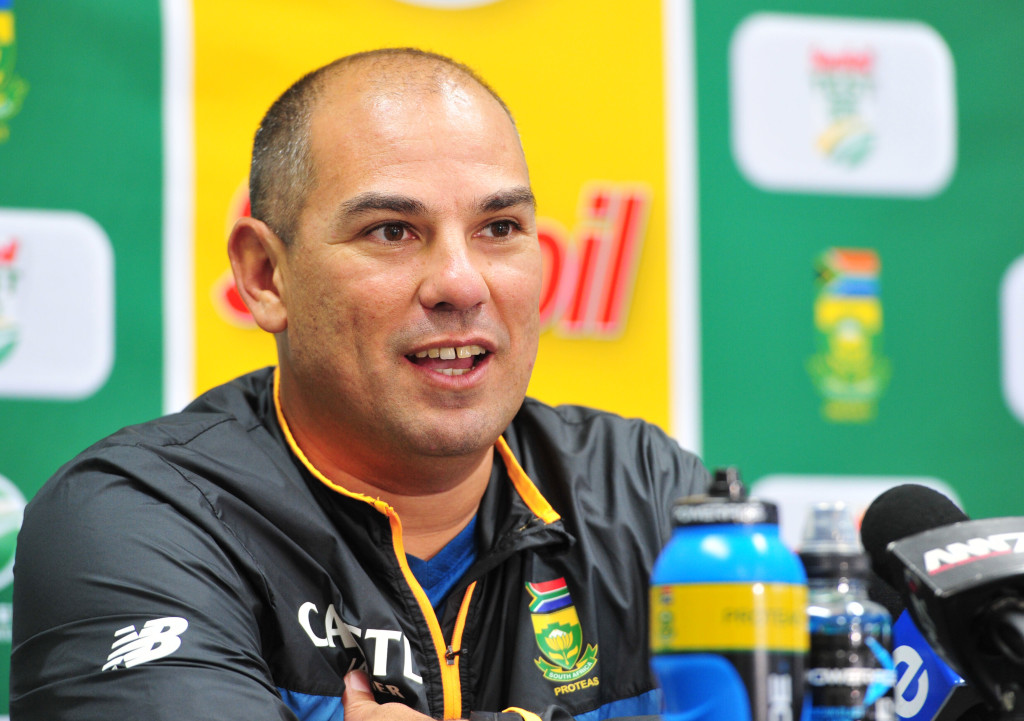The limitations of the Proteas coaches and the flawed attitude of the players can no longer be ignored.
The Proteas’ stats of the past 12 months tell a story. The body language of the players during that period speaks volumes. This is not a team worthy of the No 1 ranking. This is not an environment that is conducive to success.
This past Saturday, England won the third Test with two and a bit days to spare. The result handed England the series with a game in hand. It knocked the Proteas off the top of the ICC Test rankings. It marked South Africa’s ninth consecutive Test without a win.
The numbers are damning, but don’t tell the full story of South Africa’s steep fall from grace. It hasn’t been a case of an aging, once-great side fighting bravely to keep their crown, only to lose several closely contested matches by slender margins.
Consider the Proteas’ record in the past nine Tests, which reads: lost five, drawn four. Take a closer look at the margins of those losses. 108 runs in Mohali. 124 runs in Nagpur. 337 runs in Delhi. 241 runs in Durban. Seven wickets in Johannesburg.
Put simply, South Africa haven’t played good cricket. And when they have come up against the better Test sides, the collective lack of temperament and precision has been severely punished.
Following the disaster at the Wanderers, Proteas coach Russell Domingo admitted that the side was in a hole. The batting has been a problem for some time, and yet South Africa finished their second innings at the Wanderers with a pathetic total of 83 all out.
This time, the finger of blame could not be pointed at a groundsman, as was the case in Mohali and Nagpur. This time, Domingo had to concede that there is a problem with the batting and it’s no easy fix.
The question that’s been asked more and more over the past 12 months is whether Domingo has what it takes to address these issues. Is he the right man for a team that he himself has described as ‘a side in transition’?
Domingo and his assistants have failed to prevent a drop in standards and ultimately a rotten run in results. This group literally appears to be very different to the team that played under Gary Kirsten between 2011 and 2013.
The latter team played with a characteristic intensity and spirit. They were capable of absorbing the pressure in difficult situations, and didn’t give up without a fight.
Kirsten’s Proteas weren’t always pretty, but more often than not, they were effective. Their determination commanded respect. The team drew worthy comparisons with the West Indians of the 1980s as well as the Australians of the early 2000s.
These mental qualities are sorely lacking in the current setup, even though so many of the same players are still in tow, or where until recently.
Graeme Smith and Jacques Kallis have departed, and will not easily be replaced. But what of a group that boasts the talent of AB de Villiers, Hashim Amla, Faf du Plessis, Dale Steyn, JP Duminy, Vernon Philander, and Morné Morkel, men who all played key roles in the Kirsten era? A few of those players have been hampered by injury, most notably Steyn, but what of the others? Why has that collective not had the same impact under Domingo that it had under Kirsten?
De Villiers said after the Wanderers Test that the Proteas have the right players to be a force in Test cricket. The inference must be that the problem lies with the current game plan, the present team culture, the coaches, or all of the above.
If that is the case, the sooner changes are made to the structures, the sooner the Proteas can begin their climb back to the top.







